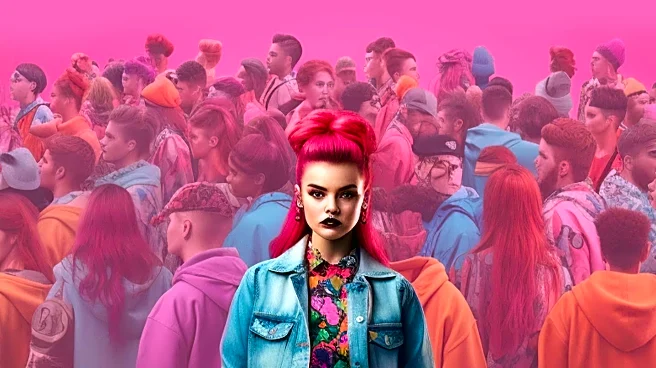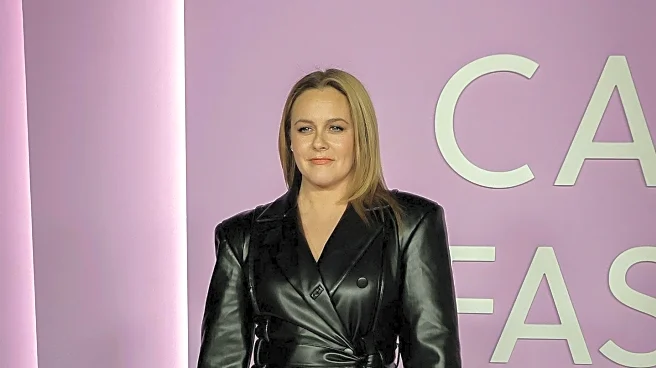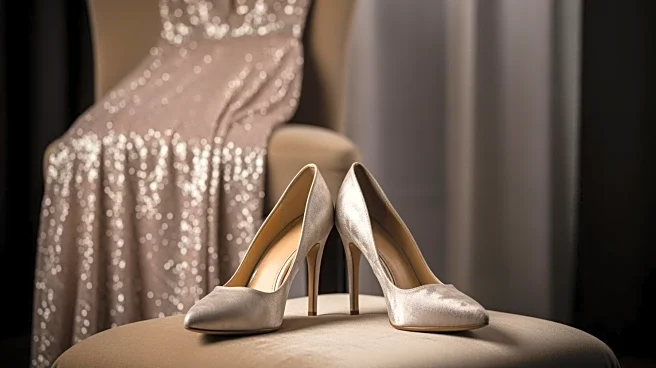What's Happening?
The concept of 'revenge dressing' has gained popularity among celebrities as a way to make bold fashion statements following breakups. This trend was originally popularized by Princess Diana in 1994 when
she wore a striking black bardot dress after her separation from Prince Charles. Recently, celebrities like Lily Allen and Nicole Kidman have embraced this trend. Lily Allen attended the CFDA Awards in New York wearing a risqué white top and skirt, marking her first public appearance since her separation from David Harbour. Nicole Kidman, following her split from Keith Urban, walked the Vogue World catwalk in Hollywood in a strapless black Chanel gown, reminiscent of Rita Hayworth's iconic look in the 1946 movie 'Gilda'. These outfits serve as powerful statements of independence and self-expression, showcasing the celebrities' ability to reclaim their image and make a lasting impression.
Why It's Important?
The trend of 'revenge dressing' highlights the evolving role of fashion as a form of personal empowerment and self-expression. For celebrities, these outfits are not just about style but also about making a statement of resilience and independence. This trend reflects broader societal shifts towards embracing individuality and challenging traditional norms of post-breakup behavior. By choosing bold and memorable outfits, celebrities can influence public perception and inspire others to express themselves confidently. The impact of these fashion choices extends beyond the red carpet, as they contribute to discussions about gender roles, empowerment, and the cultural significance of fashion in personal narratives.
What's Next?
As 'revenge dressing' continues to gain traction, it is likely that more celebrities will adopt this trend, using fashion as a tool for personal expression and empowerment. Fashion designers may increasingly cater to this demand by creating bold and statement-making pieces that resonate with individuals seeking to make a powerful impression. Additionally, the trend may inspire everyday individuals to embrace fashion as a means of self-expression, leading to a broader cultural shift towards valuing authenticity and individuality in personal style. The ongoing evolution of this trend could also spark discussions about the role of fashion in shaping public narratives and influencing societal perceptions.
Beyond the Headlines
The 'revenge dressing' trend raises questions about the intersection of fashion, identity, and societal expectations. It challenges traditional notions of how individuals should present themselves post-breakup, offering a platform for self-reclamation and empowerment. This trend also highlights the cultural significance of fashion as a form of communication, allowing individuals to convey complex emotions and narratives through their clothing choices. As the trend evolves, it may prompt further exploration of the ethical and cultural dimensions of fashion, including its role in shaping public perceptions and influencing social norms.












